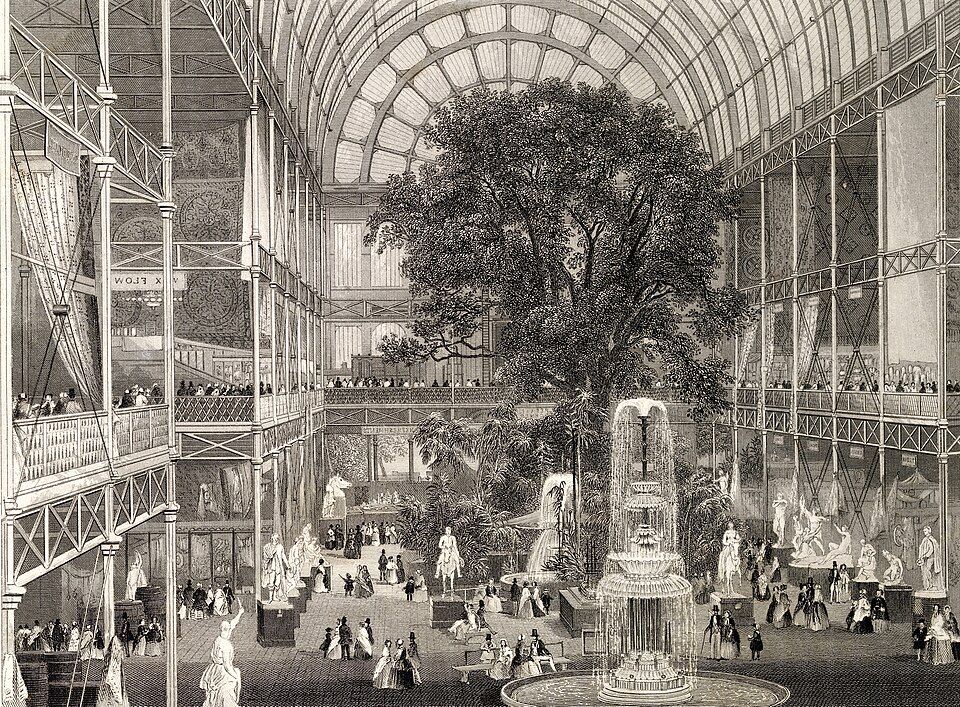Exhibitions and tradeshows have come a long way since caravans in the sand were circled by the Bedouin and other nomadic tribes that gathered to share products from the various areas and regions they had crossed on their travels.
In Europe the medieval guild fairs helped to define towns, giving them a platform to celebrate the craftsmen and women who called them home.
Today, soaring towers of commerce, great palaces dedicated to enterprise and trade, have replaced the tents and market squares that once stood in their place. And none exemplified this shift to dedicated events in quite so spectacular a fashion as the Great Exhibition of 1851, held at the Crystal Palace in London.
The event was organised by civil servant and inventor Henry Cole, motivated after an inspiring visit to the Quinquennial Exhibition in Paris two years earlier. Cole, who hailed from the picturesque town of Bath in south-west England, had returned from France disappointed that a show which purported to be global had so few international participants.
Believing that there was an opportunity to combine the 1850 and 1851 editions of the exhibitions of the Royal Society for the Encouragement of Arts, Manufactures and Commerce (RSA) – a body to which Cole belonged – he set about creating a larger international exhibition, with the backing of Queen Victoria herself through the presidency of Prince Albert. The event was to be housed in a mighty structure, the purpose-built Crystal Palace in Hyde Park, with many of the exhibits going on to become the inaugural collection of the South Kensington Museum, subsequently the Victoria and Albert Museum.
The Crystal Palace became one of the world’s iconic man-made structures, and at the time was a centrepiece for the prowess and magnificence of the British Empire. Nine months in the making, Sir Joseph Paxton’s phenomenal ultra-modern building rose to prominence as a glass showcase capable of displaying more than 100,000 products from 14,000 exhibitors from the British Empire and beyond. It measured half a kilometre in length and was 124m wide, thus giving an exhibition area of just under 89,000sqm.
Around 300,000 panes of glass, at the time cut to the largest size ever made, went into its creation, extravagant use of glass being a signature of Paxton, who had been building greenhouses for the Duke of Devonshire at Chatsworth. It was the largest composition of cut glass that had ever been assembled, and this use of glass on the sides and the roof – enabling people to see into the building from all around – is what gave the building its moniker, courtesy of playwright Douglas Jerrold, a contributor to the satirical British magazine, Punch.
Paxton based his designs on the structure of the regia lily. Using artistic themes for exhibition and convention centres continues today, with the cidra tree-inspired Qatar National Convention Centre and the Amador Convention Centre in Panama, the latter designed to represent a harpy eagle in flight – the country’s national bird.
As to what visitors could see inside the Crystal Palace, author H. Beal wrote at the time in his essay, ‘A Visit to London During the Great Exhibition’, that: “The first section of the articles will comprise raw materials and produce. The next great division into which the Exhibition will be classed will be that of machinery of all kinds, illustrative of the agents brought to bear upon the products of nature, in order to bring them in to a manufactured state. In this section will be seen all varieties of steam engines…
“In a word, every one may be able to see how cloth is made for his clothes, leather for boots, linen for shirts, silk for gowns, ribbons, and handkerchiefs; how lace is made; how a pin and needle, a button, a knife, a sheet of paper, a ball of thread, a nail, a screw, a pair of stockings are made, how a carpet is woven… In addition to this, the machinery will be exhibited in motion…”
On her arrival at the exhibition, Queen Victoria was seemingly delighted to witness a buzzing hive of activity in full flow, surrounded as she was by wide-eyed visitors and apparently overjoyed exhibitors, all coming together in some of the most awe-inspiring surroundings in the British Empire.
“The sight as we came to the centre where the steps and chair (on which I did not sit) was placed, facing the beautiful crystal fountain was magic and impressive,” she recorded in her diary. “The tremendous cheering, the joy expressed in every face, the vastness of the building, with all its decoration and exhibits, the sound of the organ… all this was indeed moving.”
The building occupied much of Hyde Park until it was taken down, rebuilt and enlarged on London’s Penge Common (then a wealthy suburb), where it remained from 1854 until destroyed by fire in 1936. During the destruction the trustee board director Sir Henry Buckland is said to have exclaimed that the building would live on in the memories “of not only Englishmen, but of the whole world.” Sir Winston Churchill himself was attributed as saying that the Crystal Palace’s destruction resounded as “the end of an age”.
But this, as we know, is not the case. The Great Exhibition of 1851 was by no means the first coming together of exhibitors and buyers/exhibitors, but it remains to this day as the super-exhibition that started it all. The appetite for celebrated and giant showplaces was whetted by what had been achieved in 1851.


Leave a Reply